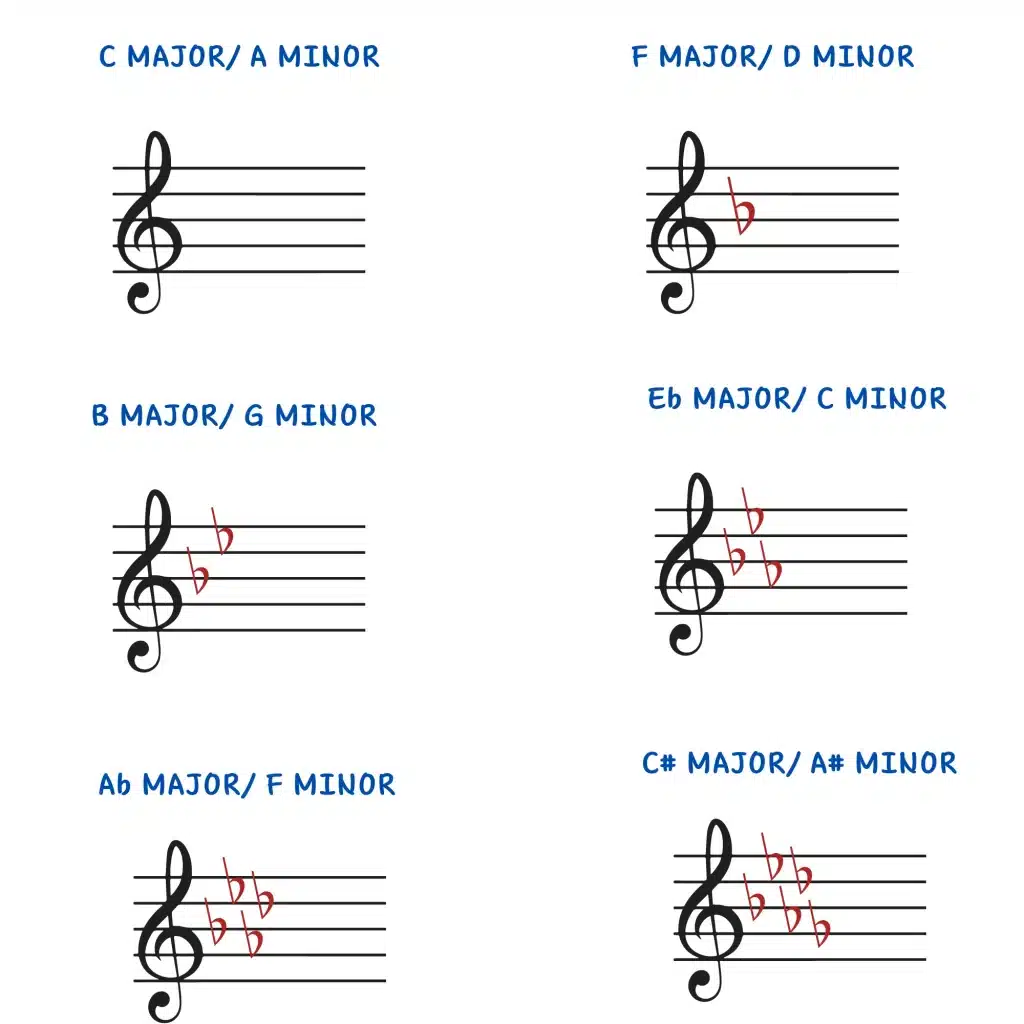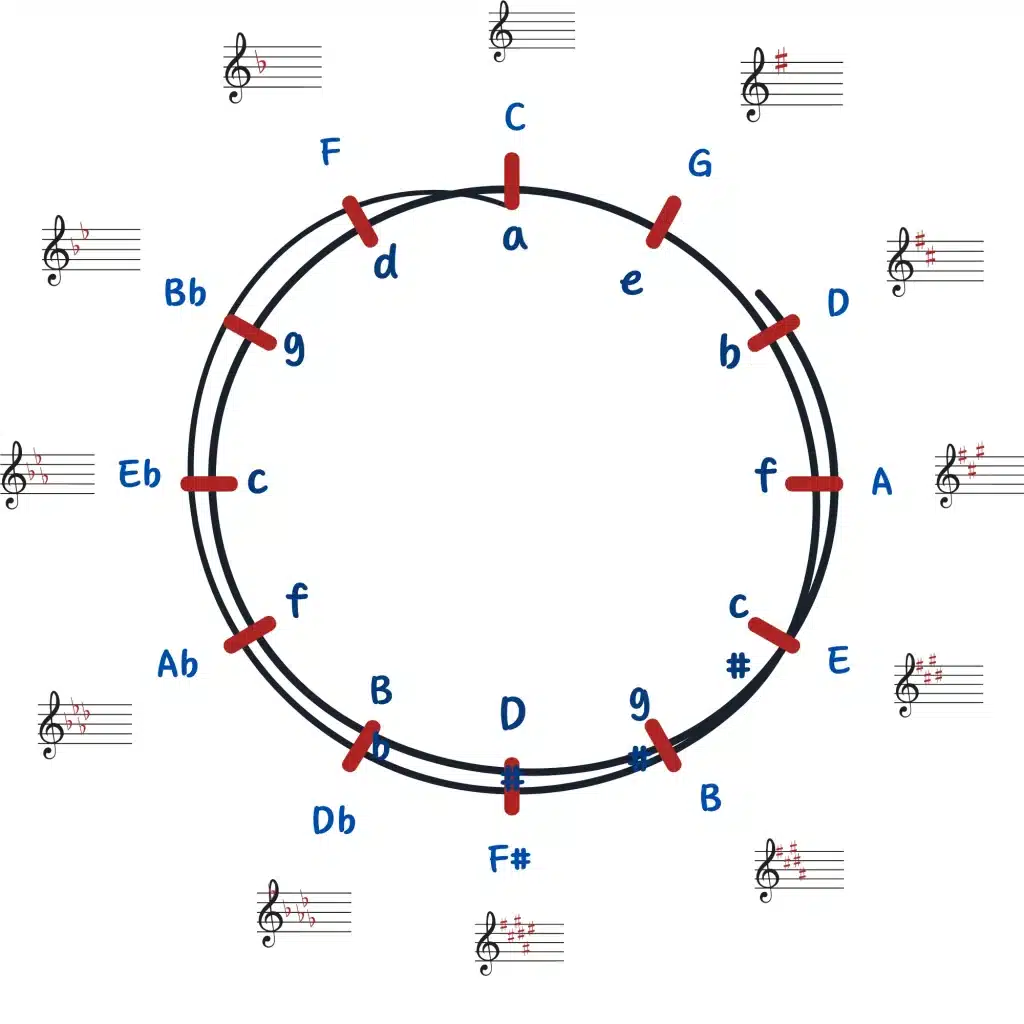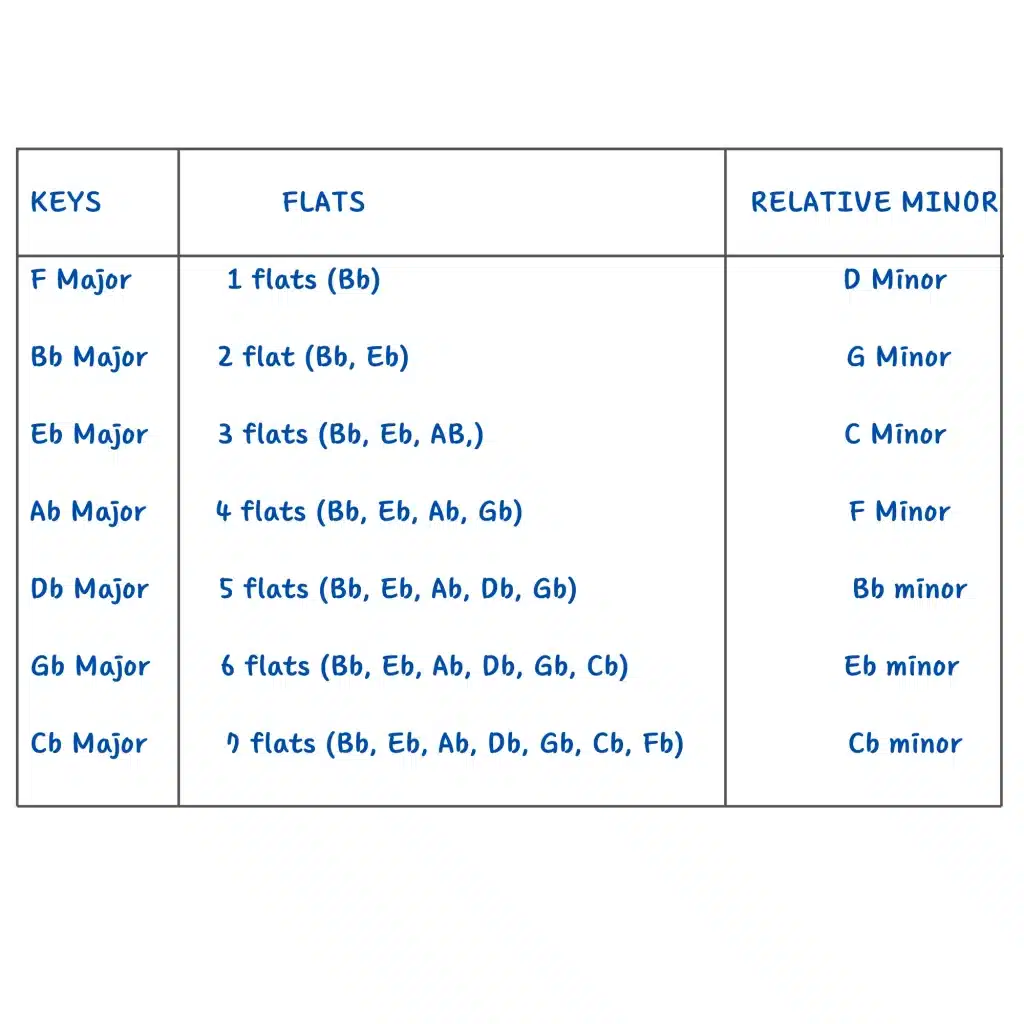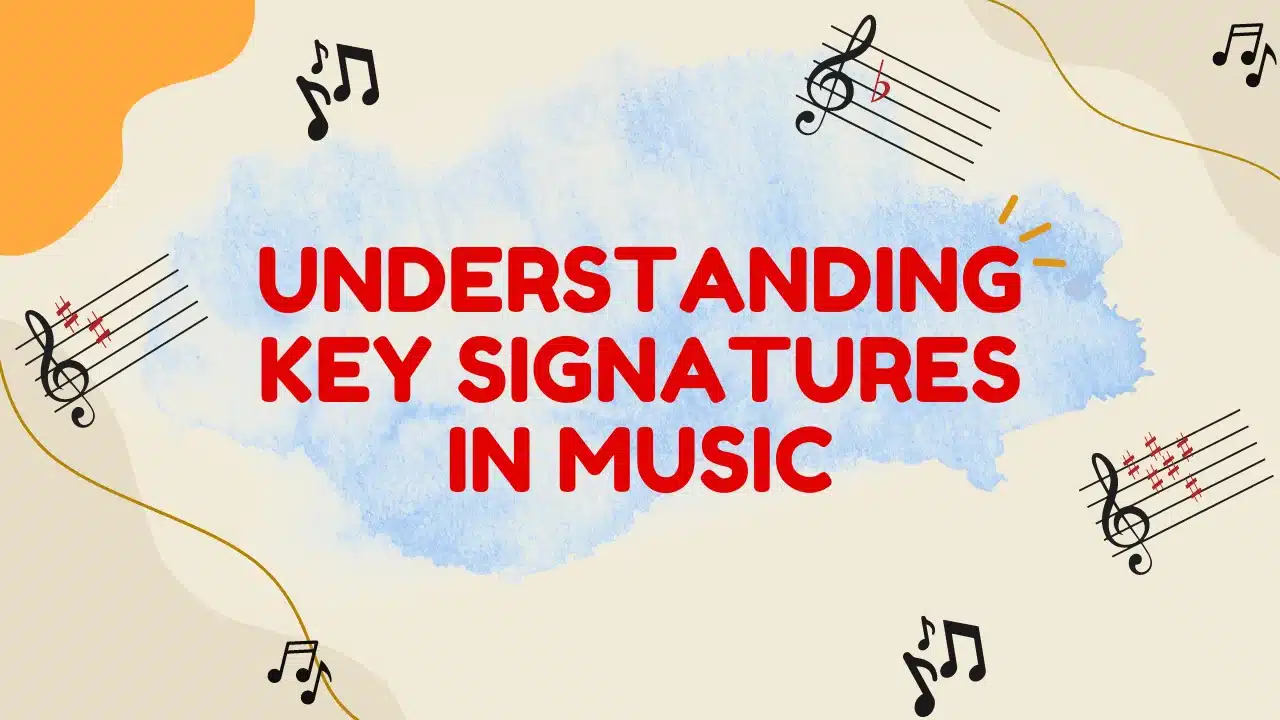- What are Key Signatures?
- Wonder what tonality means?
- What is a Tonic?
- Major Key Signatures
- How to construct a key signature for major keys?
- Minor Key Signatures
- How to construct key signatures for minor keys?
- Key Signatures Chart
- How to Identify Key Signatures in Music?
- Role of major and minor key signatures in Modulation
- Closing Thoughts
- FAQs
Sometimes all of us have a little trouble identifying the key to which a piece of music is written. Worry not! This feed about major and minor key signatures will guide you to find the collection of pitches within a piece of music. Moreover, this blog will take you through the importance of learning the circle of fifths key signatures along with a key signature in music chart for support.
What are Key Signatures?

In simple words, key signature in music are a set of sharps and flats written on a music sheet right next to a clef symbol. These musical symbols give us the notes with accidentals used in the given piece of music. Each of these key signatures have different characters and sets a different ambience with a variety of expressions.
These major and minor key signatures establish the tone of the said music thereby defining the set of pitches used. This is referred to as the tonality of a musical piece
Wonder what tonality means?
Tonality refers to organizing the music around a central pitch which is called tonic in music. The concept of tonality provides a sense of direction and coherence to the music.
What is a Tonic?
Tonic is the note that defines the key of a music piece. For Instance, if a piece of music is written in the key of C. Then C is its tonic. Usually, the starting and the ending note will be C. Remember that each key will have its own tonic.
Major Key Signatures
Major keys are built on a specific pattern of Whole steps and half steps or Tones and Semitones. The formula for that pattern,
W-W-H-W-W-W-H or T-T-S-T-T-T-S.
Using this formula, a C major scale would have the notes C-D-E-F-G-A-B-C, C being the tonic.
How to construct a key signature for major keys?

In simple words, adding up the number of sharps and flats present gives you the major and minor key signatures. Identifying key signatures on major scales depends on the number of sharps and flats present in a scale. All of the keys in music have their known position at the circle of fifths. Every major will also have its relative minor key. For example, the 6th degree of a major scale is A and the relative minor of C major is A minor.
Minor Key Signatures
These are also based on the pattern of Whole steps and Half steps or Tones and Semitones. We know that there are three types of Minor scales but let’s just look into Natural Minor Scale. Its scale pattern is,
W-H-W-W-H-W-W or T-S-T-T-S-T-T.
Using this formula, an A minor scale would have the notes A-B-C-D-E-F-G-A, A being the tonic
How to construct key signatures for minor keys?

Minor keys exactly like major keys have their share of sharp and flat key signatures. The relative minor of a major key is its sixth degree.
For example, let’s look at D major. Its a two sharp scale with the notes, D E F# G A B C# D. So here the sixth degree is B. Now we have the relative minor of D major which is B minor.

Key Signatures Chart
Here is a comprehensive Key signatures in music chart with Name of the Keys, Number of sharps and flats present in it and its relative minor.


Now this key signature chart comes handy while identifying the circle of fifths key signatures and their corresponding relative major or minor keys.
How to Identify Key Signatures in Music?
Identify any key signature in music with these 3 easy steps.
Step 1: Locate or find the sharps or flats symbols at the beginning of the staff.
Step 2: Count the number of sharps or flats.
Step 3: Each major key has a relative minor. Based on the tonic you can easily find the key Signature. Get help from the Key Signature chart above until you get familiar with the concept.

Hot Tips
Find the last sharp and raise it by a half. We have the key!
For flats, the key is identified by the second to last flat.
Role of major and minor key signatures in Modulation
Music can’t evolve without modulations. Key changes are an integral part of modulations. It is the process of changing from one key to the other within the piece. So a deeper understanding of key signatures in music helps in recognising these changes. More importantly, it guides you to make a smoother transition maintaining coherence in the sound.
Smooth modulation occurs smoothly changing from one key to the other through a common chord or a note or a progression that both the keys share.
Direct modulation occurs when there is a sudden shift from one key to another. It sounds more abrupt and creates a dramatic effect.
Closing Thoughts
As a Music Teacher, I would urge my students to understand Key signature for its fundamental concepts for all kinds of musicians. You may be a singer or guitarist or a pianist, mastering these concepts will help you in identifying the key of the piece, whether its set in major or minor, the chord progressions and the accidentals used in a piece of music. It just makes it easier to analyze and interpret and create music. Start getting familiar with these musical concepts online or with the guidance of a music tutor to have a richer musical experience. Book a FREE DEMO with us Today and become a versatile musician.
FAQs
What is a key signature in music?
Key signatures are a set of sharps and flats written on a music sheet right next to a clef symbol.
How do major and minor key signatures work?
These major and minor key signatures establish the tone of the said music thereby defining the set of pitches used.
How to read the circle of fifths key signatures?
Start from c major and move clockwise to read the keys with the number of sharps increasing. Move back to the starting point and move counter clockwise to learn the keys with increasing flats. This is the best way to read circle of fifths key signatures.
How to identify key signatures ?
Locate the key signatures, and proceed to count the number of sharps or flats written. Get help from key signature chart or circle of fifths to find the key.
What is the purpose of a key signature?
These symbols indicate which notes to be played as sharp or flat throughout the piece unless it’s changed.
Which is the 3 sharp scale?
A major or F# minor key has 3 sharps.
What key signature has 5 flats?
Db major or Bb minor has 5 flats.
How to find the relative minor key signature?
The relative minor is the minor third key below the tonic.
What are the major and minor key signatures?
Major and minor key signatures add sharps or flats progressively. Minor keys share signatures with the major relatives starting a minor third down.
Related blog: Circle Of Fifths































